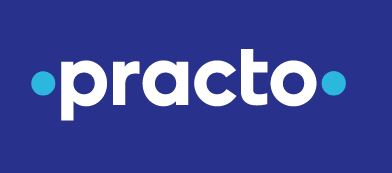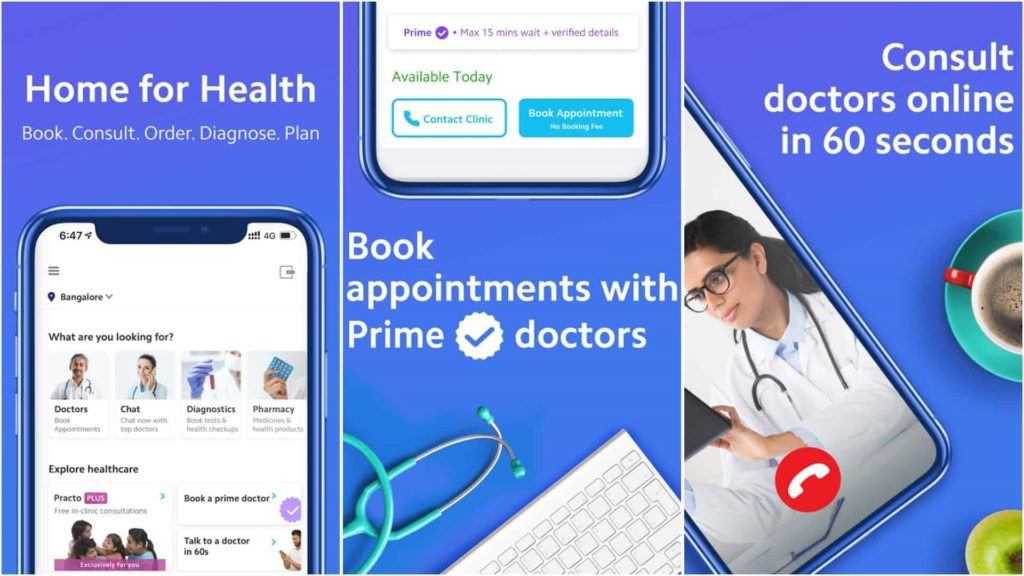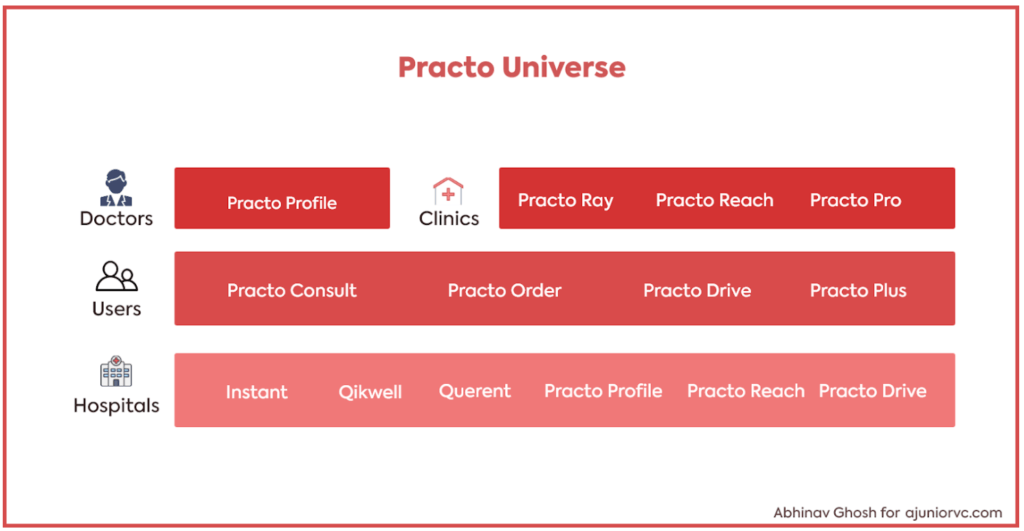Practo – India’s home for health

A technology platform to help billions lead healthier lives
Practo is a health tech company based out of India and aims to connect the fragmented medical community with millions of patients across the country. Practo has made information more accessible by creating a platform that allows doctors to list their services and manage patient interactions and provides an array of services for patients, mainly for booking interactions with doctors and maintaining a consistent medical history.
Practo targeted independent healthcare professionals across cities and small towns who were often oversubscribed and lacked sophisticated resources. It created a SaaS product for doctors to easily organize appointments, track past medical records and provide e-prescriptions. The platform enabled doctors to save valuable time, establish their presence or grow their business and engage more meaningfully with patients than ever before. While independent doctors and small clinics were the main target of its product, Practo created a multitude of products and services for consumers to enjoy network effects on this platform. Practo reduces the search and transaction costs for patients (consumers) and helps users find the right doctors through easily accessible and contextually relevant listings. As a valuable extension, Practo provides health-centric credit cards and allows patients to order medicines online.

Practo has smartly captured value through its platform and deeply subsidized the consumers part of the network. Its revenue model centers around the medical providers (clinics) and Practo makes most its money through the SaaS subscription software. For patients, the listings are free, and the company doesn’t charge any commissions. By increasing efficiency and visibility of small clinics, Practo wants to make the platform sticky on the supply side. Similarly, by making the demand side free, it aims to retain patients on account of its superior product the ability to maintain health history (especially in the absence of a national system) and an ever-growing array of medical services and adjacencies.
Practo has deployed a feet-on-ground sales strategy, which is expensive but effective. Due to lack of any organized system, the platform is very sticky for doctors and will make the economics work – a long time commitment from doctors has ensured that the lifetime value (LTV) of its product is very high and justifies the higher customer acquisition cost (CAC) initially. Finally, data captured by Practo (access to over 10+ M medical records) is a huge value capture option which is yet to be exercised. No other system in the country has the scale nor richness of data compared to Practo and it opens a vast pool of businesses that Practo can venture into.
Practo’s model has already proved to be scalable with their market entries into multiple other countries like Malaysia, Brazil, Singapore. Their strategy to scale is simple – onboard as many doctors and clinics onto the platform and drive value for them. Then, by heavily subsidizing the consumers and providing good services, patients would follow. Their on-foot sales approach seems cumbersome, especially in different markets but the high LTV justifies the CAC that Practo may occur in different countries.
Practo has set itself up in a way to avoid disintermediation. The governing environmental factors that keep patients/consumers locked-in include the vast array of health-related services available on Practo’s platform and the lack of a viable alternative. Similarly, doctors are benefiting from the scale and efficiency the software provides and are more incentivized to take the patients through the system rather than bypass it. Since it is a commission-free model, doctors are not worried about Practo taking a cut and prefer using the systems to save time. Multi-homing threat is also reduced since the company is storing all health-records in one location for the users’ convenience, avoiding the temptation to move to other solutions on different occasions.

In most cities across the country, Practo has been a first mover connecting local communities with healthcare services. This has created small clusters where Practo is operational and also opens them up to local competition. This business has smaller geographically concentrated clusters like Uber in terms of network effects. In specific areas where Practo has not expanded, local competitors can come up with similar products and lock-in that community of doctors and potential patients onto their platform. Thus, scaling quickly and nipping competition in these smaller clusters must be Practo’s focus.
In the future, the platform will continue to enjoy and thrive on network effects. The reviews and ratings on Practo will ensure same-side network effects as people want to work with trusted sources and learn about their peer’s experience. Similarly, the two-sided network effect will be enhanced when more users on the platform will prompt and incentivize more clinics to reach that audience, thereby creating a virtuous cycle.
A strong platform, focus on simplifying the healthcare process and creating value-add services for both doctors and patients makes Practo poised to emerge as a massive winner in the Indian health tech industry.
Sources:
https://ajuniorvc.com/practo-heathcare-healthtech-startup-medical-provider-doctor/
https://www.quora.com/What-is-revenue-model-of-Practo
https://lapaas.com/practo-business-model/
https://www.quora.com/How-does-practo-make-money
https://www.whizsky.com/2017/09/case-study-procto-business-model-revenue-funding/



Interesting article. I wonder about the ethics of “locking” clinics and doctors to a single platform. What if a customer uses a competitors system? Will it interfere with their ability to get treated? I see a risk of multi-homing here – whichever system a medical provider is using is the system the patient will engage with, up to as many platform as they need to engage with. And since the costs are low for the customer, it doesn’t cost them anything to be on multiple platforms. But then comes the question of how medical information is transferred, since I assume it’s not owned by the customer. I agree though that Practo may have the biggest competitive advantage in simple being the first mover in cities and countries. By not giving customers the opportunity to even know about its competitors, I think Practo could maintain it’s leader position.
Thank you for sharing about this service! I hadn’t heard of it before. I know in India there are so many private healthcare providers and most consumers do not have health insurance, so there is a much greater need for direct to consumer advertising (which is everywhere on the streets). I also have heard many medical practices communicate with their patients over WhatsApp today. I think that is the biggest competitor for them and why they can’t afford to charge commission. Time will tell whether they really provide enough value to their users over such an accessible alternative or if they might have to expand into other value-added services in this space such as owning their own doctors and being on the platform themselves, or providing quality control measures.